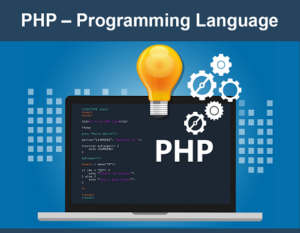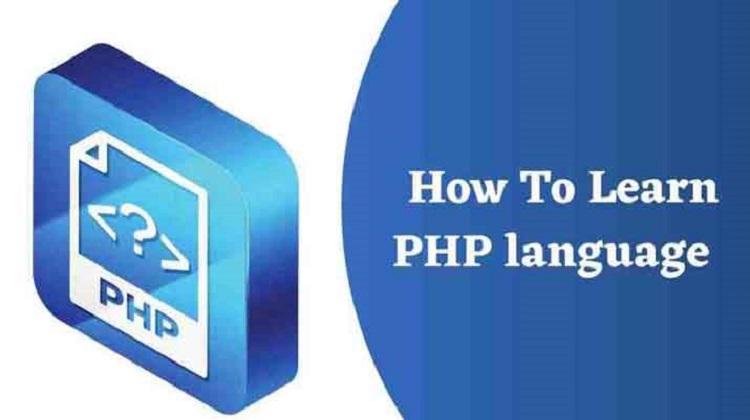In today’s digital age, learning programming languages has become an essential skill, and PHP (Hypertext Preprocessor) is one of the most widely used languages for web development. Whether you are a beginner looking to start your programming journey or an experienced developer wanting to expand your skill set, learning PHP at home can be an effective and convenient way to achieve your goals. This comprehensive guide will provide you with step-by-step instructions, valuable resources, and practical tips to learn PHP from the comfort of your own home, all in a convenient PDF format.
How To Learn Php Language At Home Pdf
- Understanding PHP
- Setting Up Your Environment
- PHP Syntax and Fundamentals
- Working with Databases
- Building Dynamic Web Applications
- Best Practices and Advanced Topics
- Resources and Additional Learning Materials
- Practicing and Building Projects
- Troubleshooting and Debugging
- Continuous Learning and Growth
- Freelancing and Career Opportunities
- Tips for Successful Self-Learning
- Overcoming Challenges and Common Pitfalls
Section 1: Understanding PHP:

Before diving into the learning process, it’s crucial to understand the basics of PHP. This section will introduce you to PHP, its history, and its significance in web development. You will learn about PHP’s features, its role in server-side scripting, and how it integrates with HTML and databases. Additionally, you will explore the benefits of learning PHP and the various career opportunities available for PHP developers.
Section 2: Setting Up Your Environment :
To begin learning PHP, you need to set up your development environment. This section will guide you through the process of installing PHP on your computer, whether you are using Windows, macOS, or Linux. You will also learn how to set up a local development server using tools like XAMPP or WAMP. Clear and concise instructions will ensure a smooth setup process, allowing you to start coding PHP applications quickly.
Section 3: PHP Syntax and Fundamentals:
This section will provide an in-depth understanding of PHP syntax and fundamental concepts. You will learn about variables, data types, operators, control structures, and functions in PHP. Through practical examples and explanations, you will gain a solid foundation in writing PHP code. Additionally, you will explore the concept of object-oriented programming (OOP) in PHP and its advantages in building robust applications.
Section 4: Working with Databases:
Database integration is an integral part of many web applications. In this section, you will discover how to connect PHP with popular database systems like MySQL or PostgreSQL. You will learn how to perform essential database operations such as querying, inserting, updating, and deleting data using PHP. Moreover, you will explore techniques for handling errors and ensuring data security.
Section 5: Building Dynamic Web Applications:
This section will focus on developing dynamic web applications with PHP. You will learn how to handle form submissions, manage user authentication and sessions, and interact with external APIs. Through hands-on projects and practical exercises, you will gain the skills needed to create interactive and engaging web applications.
Section 6: Best Practices and Advanced Topics:
To enhance your PHP coding skills, it’s essential to follow best practices and explore advanced topics. This section will cover topics such as code organization, error handling, security measures, and performance optimization techniques. You will also discover resources for further learning, including online communities, tutorials, and reference materials.
Section 7: Resources and Additional Learning Materials:
To further enhance your PHP learning journey, there are various resources and learning materials available to you. This section will provide a list of recommended books, online courses, tutorials, and documentation that can deepen your understanding of PHP. Additionally, you will find useful websites and forums where you can engage with the PHP community, ask questions, and seek guidance from experienced developers. Taking advantage of these resources will not only expand your knowledge but also help you stay up to date with the latest PHP developments and best practices.
Section 8: Practicing and Building Projects:
Practice is vital for mastering any programming language, and PHP is no exception. In this section, you will discover the importance of hands-on practice and building projects. By working on real-world projects, you will reinforce your PHP skills, improve problem-solving abilities, and gain valuable experience. The guide will provide suggestions for project ideas, ranging from simple exercises to more complex web applications. Moreover, you will learn how to break down larger projects into manageable tasks and leverage online platforms to showcase your work and receive feedback from the community.
Section 9: Troubleshooting and Debugging:
As a PHP developer, you will inevitably encounter errors and bugs in your code. This section will equip you with troubleshooting and debugging techniques to identify and resolve issues efficiently. You will learn how to use debugging tools, error logs, and step-by-step debugging approaches to pinpoint and fix errors in your PHP applications. Understanding these techniques will save you time and frustration, ensuring that your PHP code runs smoothly and produces the desired outcomes.
Section 10: Continuous Learning and Growth:
Learning PHP is not a one-time endeavor but an ongoing process. This section emphasizes the importance of continuous learning and growth as a PHP developer. You will explore ways to stay updated with the latest PHP trends, attend conferences and meetups, and participate in online communities. Additionally, you will discover the value of exploring related technologies and frameworks that can enhance your PHP skills, such as Laravel, Symfony, or WordPress. By embracing a growth mindset and remaining curious, you will be well-positioned to adapt to evolving industry demands and excel as a PHP developer.
Section 11: Freelancing and Career Opportunities:
Once you have acquired a solid understanding of PHP, there are various career opportunities and paths you can explore. This section will highlight the potential for freelancing as a PHP developer, where you can work on projects independently and showcase your skills to clients worldwide. You will learn how to build a portfolio, market your services, and establish a strong online presence. Additionally, you will discover other career options such as joining web development agencies, software companies, or working as an in-house PHP developer for organizations. This section will also provide insights into the current job market demand for PHP developers, salary ranges, and potential areas for specialization within PHP.
Section 12: Tips for Successful Self-Learning:
Learning PHP at home requires discipline, motivation, and effective learning strategies. In this section, you will find practical tips to optimize your self-learning experience. From setting clear goals and creating a study schedule to staying organized and maintaining a balance between theory and practice, these tips will help you stay focused and make the most of your PHP learning journey. You will also learn the importance of patience and persistence in overcoming challenges, seeking help when needed, and celebrating your achievements along the way.
Section 13: Overcoming Challenges and Common Pitfalls:
Learning any programming language comes with its fair share of challenges and pitfalls. This section will address common challenges that PHP learners may encounter and provide strategies to overcome them. From dealing with complex concepts and debugging errors to managing frustration and overcoming imposter syndrome, you will gain insights and techniques to navigate through these obstacles. Additionally, you will learn the importance of practicing problem-solving skills, seeking support from online communities, and embracing a growth mindset to overcome challenges and continue progressing in your PHP learning journey.
Conclusion:
Learning PHP at home through a comprehensive guide like this provides you with the opportunity to acquire a valuable skill set in web development. By following the step-by-step instructions, leveraging resources, practicing regularly, and engaging with the PHP community, you can confidently embark on your PHP learning journey. Remember, patience and perseverance are key. With dedication and a growth mindset, you can become a proficient PHP developer, opening doors to exciting career opportunities in the ever-expanding world of web development.

